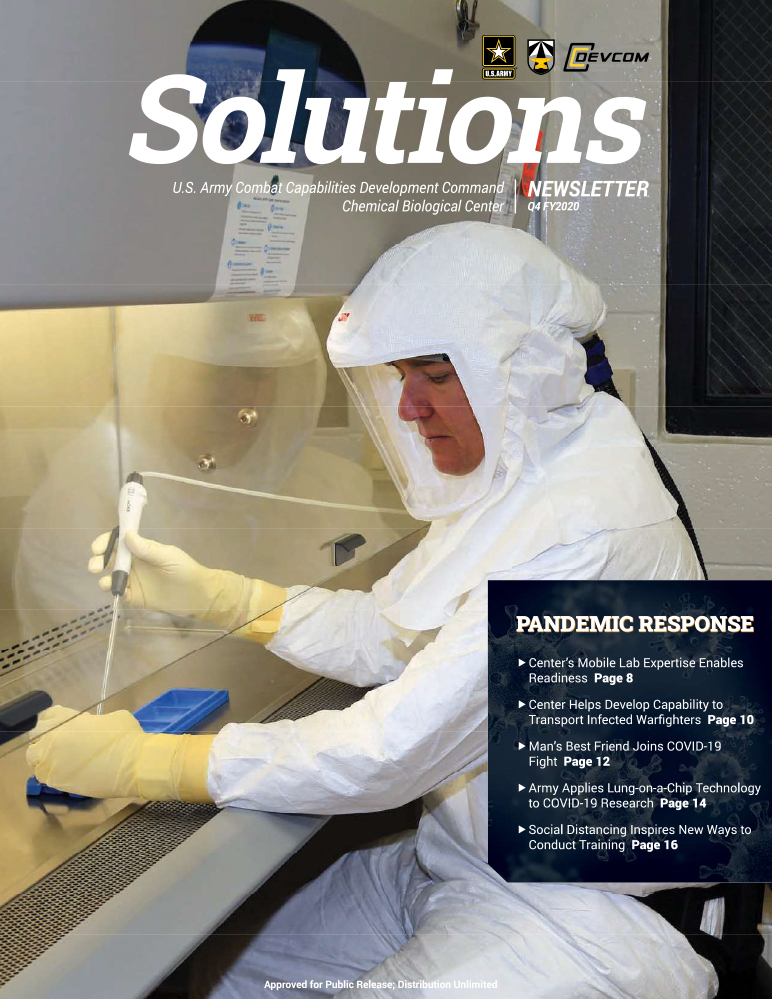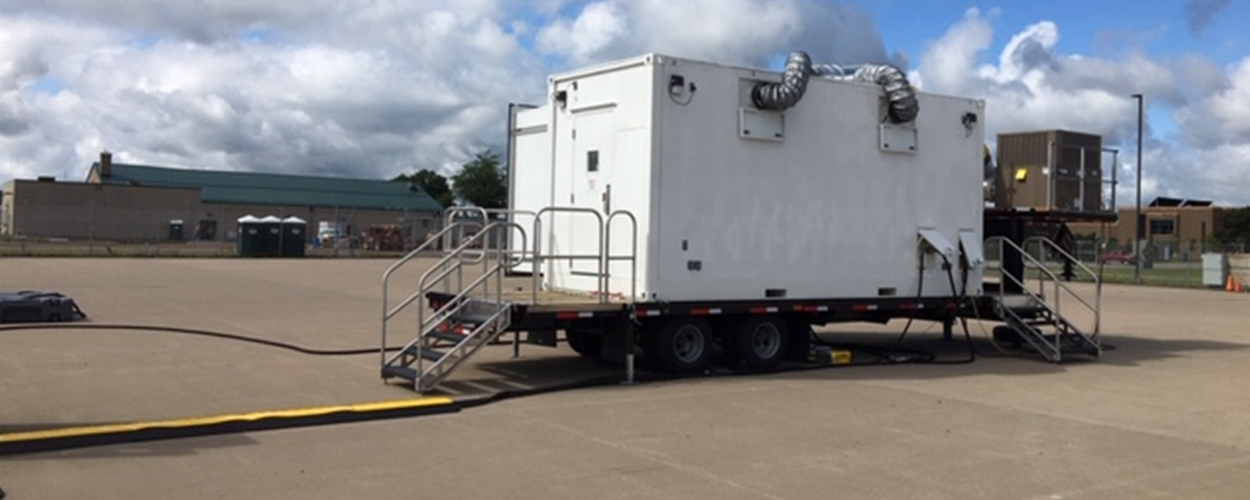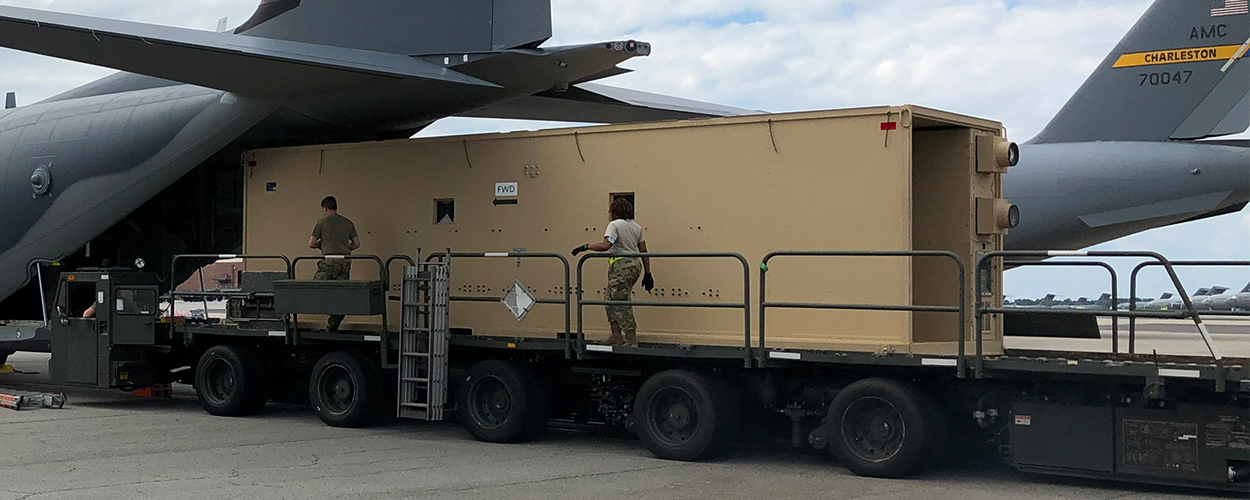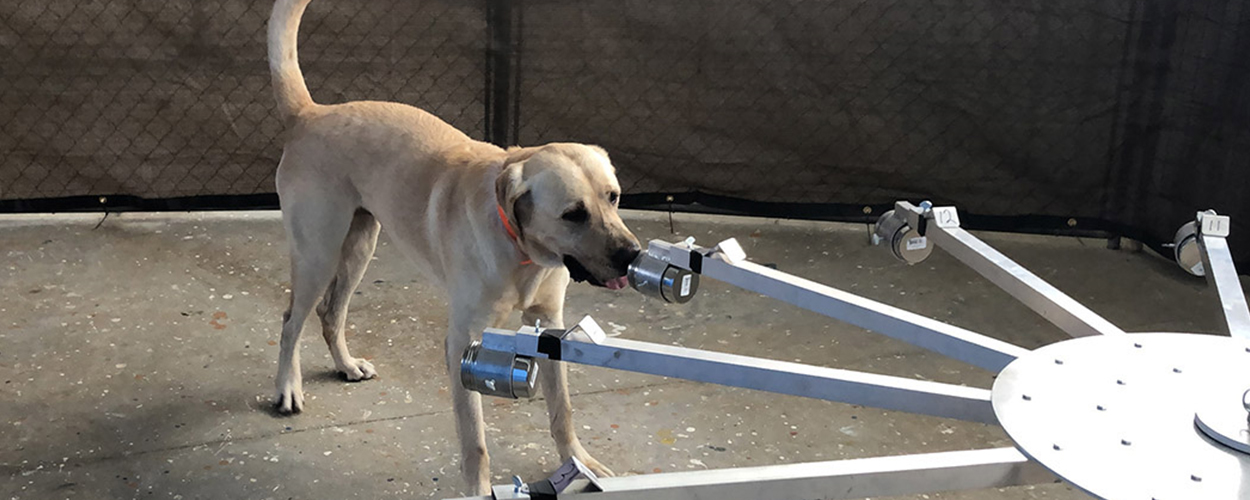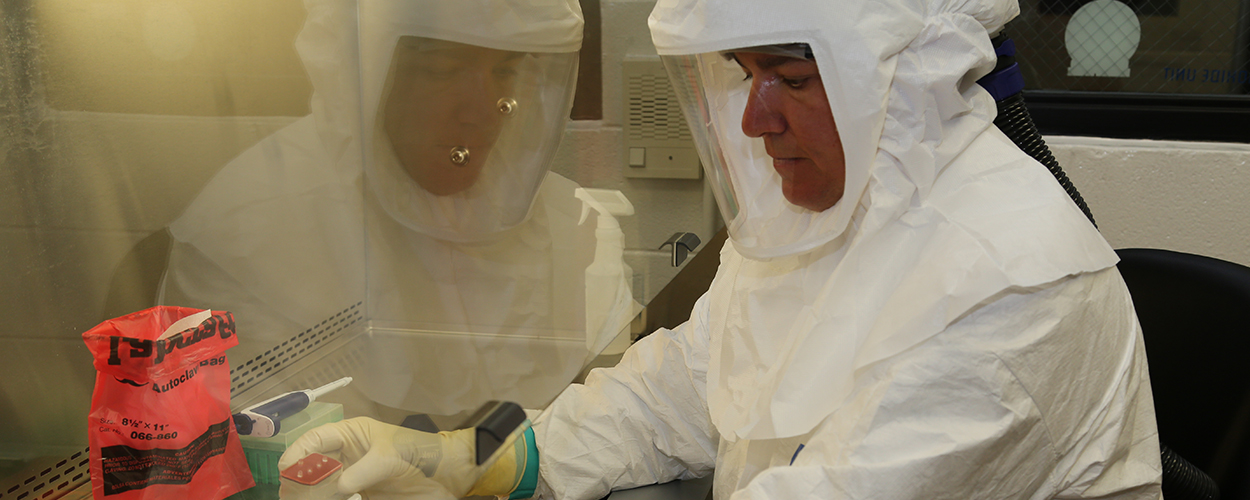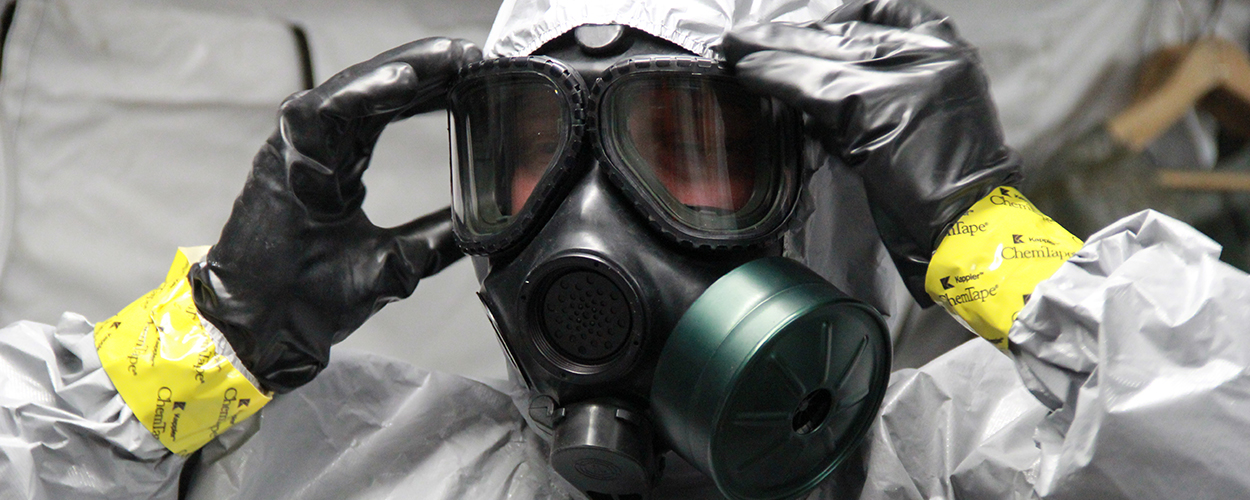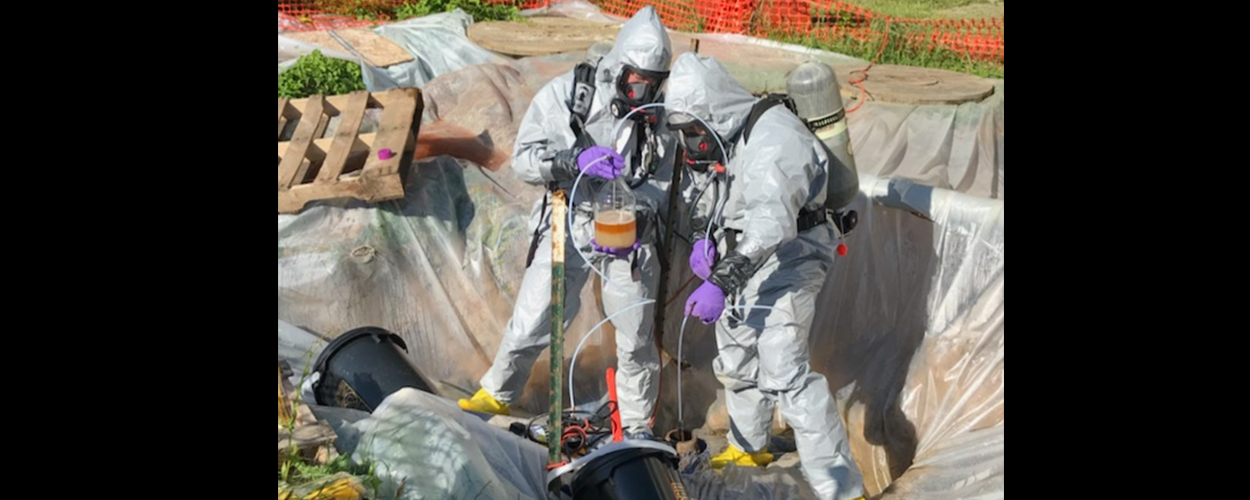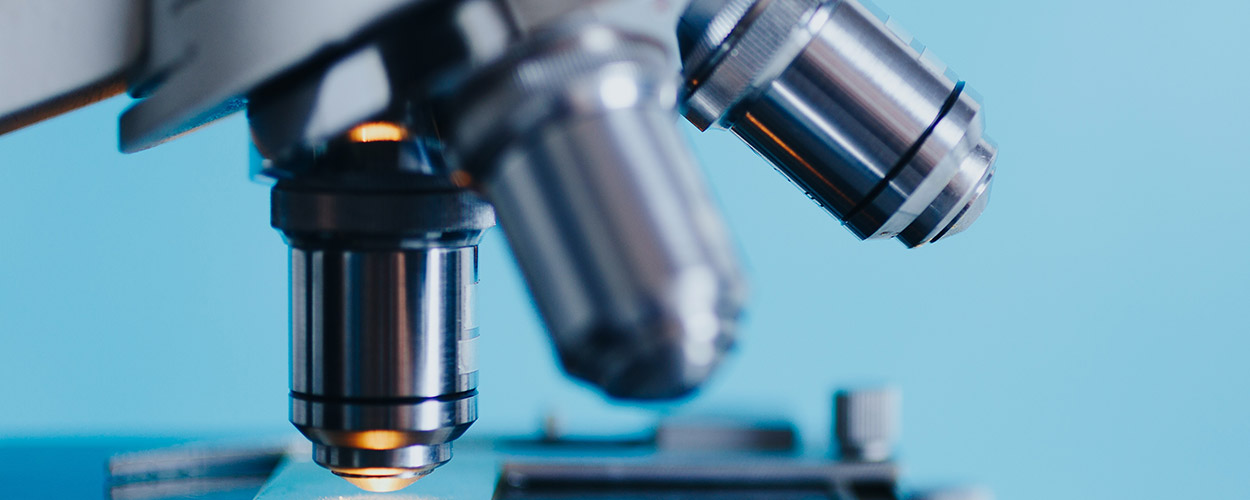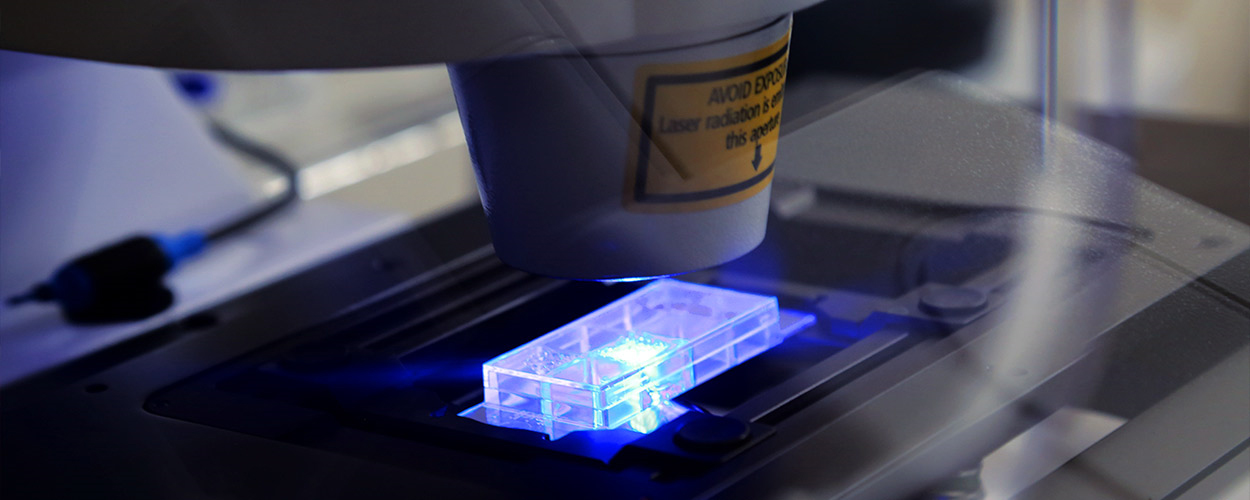Q4 FY2020
U.S. Army Combat Capabilities Development Command (DEVCOM) Chemical Biological Center | Newsletter
CCDC Chemical Biological Center
News from the Field
Maryland
In August, DEVCOM CBC personnel completed the installation of biosafety cabinets at the Kimbrough Ambulatory Care Center at Fort Meade, Maryland and the Barquist Army Health Clinic at Fort Detrick, Maryland as part of establishing a clinical testing capability for COVID-19.
DEVCOM CBC personnel haven’t let the COVID-19 pandemic prevent them from training Soldiers in the field. Center experts provided virtual chemical-biological threat training in August to the 83rd Chemical Battalion using Microsoft Teams. Unclassified CB agent related classroom training material was delivered virtually by Center scientists to more than 50 Soldiers, followed by a day of hands-on work by participants to construct mock clandestine chemical biological laboratory processes from training supplies. Soldiers then briefed their procedures to classmates, their leadership, and Center training staff to affirm lessons learned.
In August, DEVCOM CBC personnel completed the installation of biosafety cabinets at the Kimbrough Ambulatory Care Center at Fort Meade, Maryland and the Barquist Army Health Clinic at Fort Detrick, Maryland as part of establishing a clinical testing capability for COVID-19.
DEVCOM CBC personnel haven’t let the COVID-19 pandemic prevent them from training Soldiers in the field. Center experts provided virtual chemical-biological threat training in August to the 83rd Chemical Battalion using Microsoft Teams. Unclassified CB agent related classroom training material was delivered virtually by Center scientists to more than 50 Soldiers, followed by a day of hands-on work by participants to construct mock clandestine chemical biological laboratory processes from training supplies. Soldiers then briefed their procedures to classmates, their leadership, and Center training staff to affirm lessons learned.
Michigan
In August, Center personnel performed acceptance testing for Negative Pressure Container Lite (NPCL) production unit number 2 at the contractor facility in Howell, Michigan. The NPCL fits into the cargo compartment of an Air Force C-130 Hercules, and is designed to transport individuals with the COVID-19 virus and other highly infectious diseases while preventing the aircrew and medical professionals onboard from being exposed. CBC engineers subject each NPCL unit to a series of operational tests as well as a full inspection of components and features.
In August, Center personnel performed acceptance testing for Negative Pressure Container Lite (NPCL) production unit number 2 at the contractor facility in Howell, Michigan. The NPCL fits into the cargo compartment of an Air Force C-130 Hercules, and is designed to transport individuals with the COVID-19 virus and other highly infectious diseases while preventing the aircrew and medical professionals onboard from being exposed. CBC engineers subject each NPCL unit to a series of operational tests as well as a full inspection of components and features.
West Virgnia
The CCDC Chemical Biological Center led a Dismounted Reconnaissance Sets, Kits, and Outfits (DR SKO) software upgrade mission in August for a U.S. Army Reserve unit Morgantown, West Virginia. The Center conducted system inspection, property accountability, and performed software upgrades on several components of the DR SKO system. The DR SKO software upgrade provided the unit with the latest information that significantly improves the warfighter’s capability for detection, identification, protection and decontamination of chemical and biological threats.
The CCDC Chemical Biological Center led a Dismounted Reconnaissance Sets, Kits, and Outfits (DR SKO) software upgrade mission in August for a U.S. Army Reserve unit Morgantown, West Virginia. The Center conducted system inspection, property accountability, and performed software upgrades on several components of the DR SKO system. The DR SKO software upgrade provided the unit with the latest information that significantly improves the warfighter’s capability for detection, identification, protection and decontamination of chemical and biological threats.

